Yes. Red-eye tetras eat plants. Because they are omnivores. It means this tetra eats both animals and plants matters. Likewise, most tetra species prefer to eat live plants. But they only tend to eat live plants when they are hungry and there are not any other things to eat. However, if you feed your red-eye tetras well, they allow live plants to live alone. In addition to that, when considering the size of the tetras with other fish species, they are relatively small. So, the overall impact on the aquatic plants is negligible.
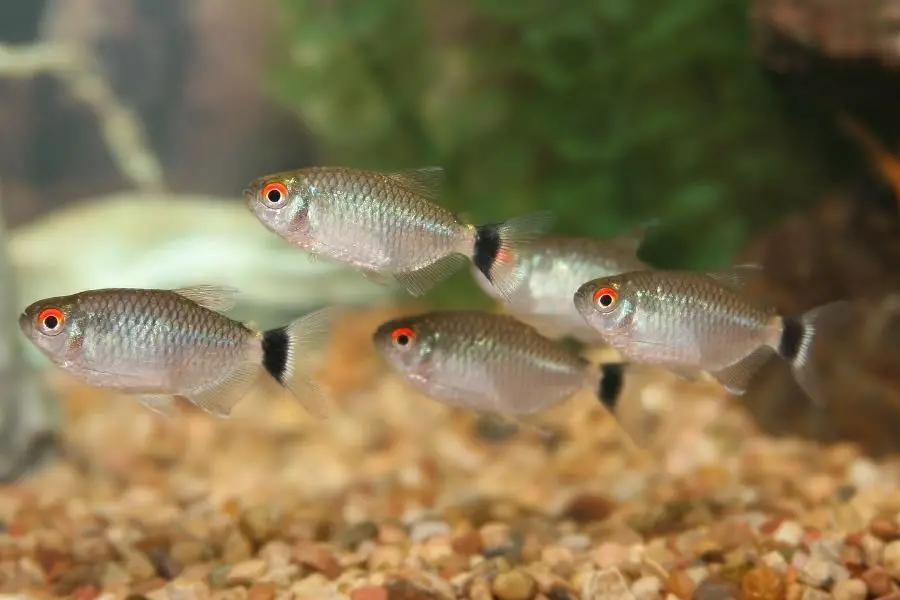
What Do Red Eye Tetras Eat?
Jump To
In the wild, Red-eye tetra lives in freshwater rivers, streams, and ponds. Consequently, these fish have lots of food in the wild habitat. They eat small insects, crustaceans, worms, larvae, dead plants, and algae. But in captivity, they feed on a different variety of foods such as frozen, freeze-dried, live, and prepared. Moreover, you should feed them a diverse and balanced diet. It will directly help to keep them healthy. As well quality and nutrients rich foods cause them to improve their appearance with beautiful colors. Additionally, you can provide the below food types for Red eye tetras.
Prepared Foods for red-eye tetras
Pellets
Pellets are high-quality food with more nutrients. But you should ensure that the pellets contain at least 30% crude protein. Further, there are two types of pellets in the market. These are sinking pellets and floating pellets. Normally, tetra fish are surface feeders. So, floating pellets are the best option.
Flakes and wafers
Other prepared foods are flakes and wafers. But most aquarists do not use flakes and wafers as much as pellets for tetra fish. You can feed the red-eye tetra with the meaty flakes having some plant matter. However, another important thing is, that you should avoid the flakes that have more fillers. Also, flakes sink quickly in water. Therefore, it reduces the water quality. So, when you feed your tetra with flakes, you should highly consider the amount.
Freeze-Dried Foods
This food type is also a better addition to the balanced diet. Freeze-dried foods consist of more nutrients than prepared foods. For instance, the best freeze-dried foods are bloodworms and mosquito larvae. You can provide this food type to your red-eye tetra three times a week with fish pellets and flakes.
Live Foods
Live foods are rich in nutrients. Also, they are very expensive. You can use brine shrimps, fruit flies, micro worms, daphnia, and other small insects to feed red eye tetras. But when you collect or buy live foods, you should be careful. Because these live foods like insects may have some parasites.
Frozen Foods
This food type is also a better alternative. Similarly, frozen food packs lots of nutrients including a high level of proteins. But they are not as expensive as live foods. But you cannot add frozen food directly to the tank. Before providing frozen foods to tetra, you should leave food to defrost. Also, you can provide frozen foods to red-eye tetras once in a while.
Tetra Color Bits
There are color bits that are specially prepared for tetra fish. You can buy them in pet stores. This food not only packs balanced nutrients but also color enhancers. Hence, this food type helps to enhance the brightness and beauty of the tetra fish.
Special Note: If you keep your red-eye tetra, always try to mimic the diet of their natural habitats. In addition to these, you can feed them with supplement foods. These supplements help to improve fish health and color.
An instant best-selling food is listed below.
- TetraColor Tropical Flakes with Natural Color Enhancer
- TetraMin Plus Tropical Flakes, Cleaner and Clearer Water Formula
- Tetra TetraPRO Tropical Color Crisps With Biotin for Fish
- TetraMin Nutritionally Balanced Tropical Flake Food for Tropical Fish
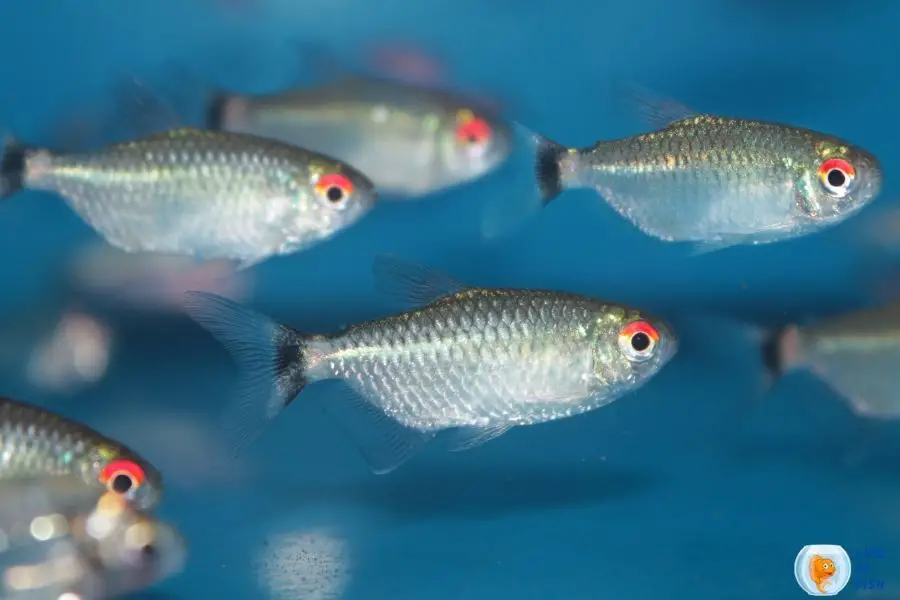
Why Are My Red Eye Tetra Nibbling Plants?
Normally, the red-eye tetras are nibbling the aquatic plants. They mostly have a habit of nibbling live plants such as Anubias Petites and Amazon Swords. But in some circumstances, it can be caused to increase this behavior of tetras. The main thing is a lack of food. If you do not feed red-eye tetras and there are no foods to eat them, fish tend to nibble the live plants in the tank.
Feeding Frequency Of Red Eye Tetra
The ideal feeding route of red-eye tetra is twice a day. So, you can feed your tetra in the morning and the evening or afternoon and night. This depends on you. But do not forget to continue the feeding and rioting constantly. In addition to that, tetras are very adaptive. Therefore, if you disturb or fluctuate the routing, it can cause stress to your tetras. However, if you are not able to feed them regularly, you can set up an automatic feeder. This will help you to overcome this issue. Here, you have the ability to adjust the time and amount of food in this machine.
Special Note:
Anyhow, you should feed them regularly. Because lack of food leads the tetras to become malnourished. It will affect the immune system of your red-eye tetra fish. Another important thing is, do not allow to overfeeding the fish. So, it can badly affect the health of the tetras.
Therefore, you should provide foods that they can finish within 2 or 3 minutes. But larger ones need more food. Hence, you should consider it too. After feeding you should remove the uneaten foods from the tank. Because when disposing of uneaten foods, it will release the byproducts like ammonia, nitrate, and nitrite. As a result of these by-products, water quality may reduce.
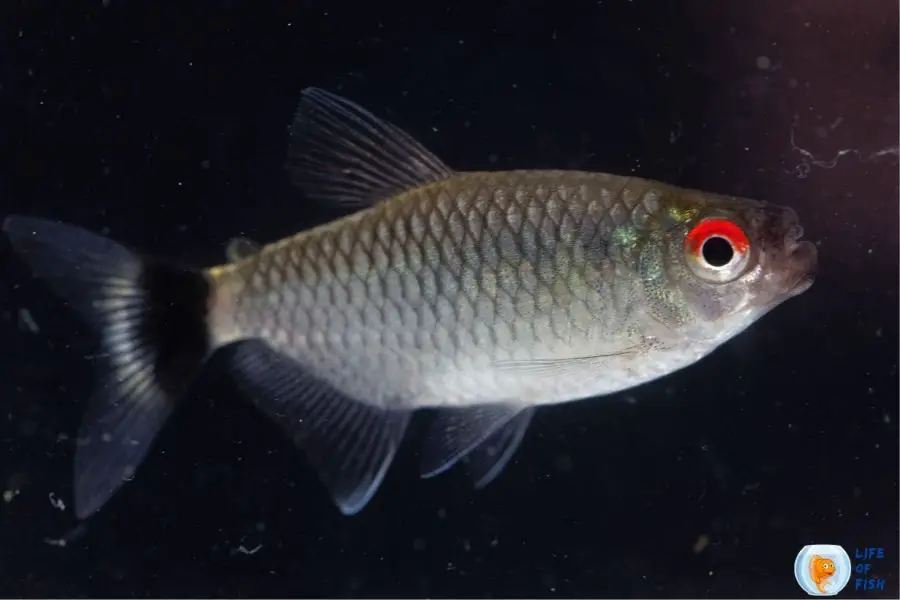
Which Plants Are Suitable For A Red Eye Tetra Tank?
The list of live plants, mentioned below, looks nice and brings more benefits for red-eye tetras. Additionally, these aquatic plants are safe for red-eye tetra fish. Thus, I would like to recommend the following species for your beautiful freshwater tank.
Java Fern
This live plant is easy to care for. Therefore it will be a better option for most freshwater aquariums. Also, java ferns and red tetras can survive in the same water conditions. That’s why it is ideal for the red tetras’ tank. Further, the java fern needs moderate lighting conditions to grow well. You can plant them in the background of a tetra tank. Because Java fern can grow up to 10 inches in height. Further, it has medium-width, long leaves. So, these leaves make better hiding spots in the tank. The most important thing is red-eye tetra usually does not tend to eat Java fern.
Hornwort
Hornwort is a submerged free-floating aquatic plant. Therefore it is suitable for the red tetras’ tank. Moreover, hornwort can survive in diverse water conditions and it is easy to care for. But hornwort takes more time to grow. In addition to these facts, it reaches around 24 inches tall. Hence, hornwort is better for the background and midground areas of the tank.
Amazon Sword
This foreground and midground plant reach around 6 inches in height. Also, the amazon sword can be fine in the same water conditions that suit tetras. Further, the flat and broad leaves of this plant are a good place to take a rest for tetra fish. In addition, the amazon sword gives a beautiful bright green appearance to your tank. Sometimes you will notice that the red-eye tetra nibble on them. But do not worry. It is a normal behavior of tetra fish.
Java Moss
Java moss is easy to grow and maintain. Also, it is a hard plant. Due to its low requirements regarding water quality and lighting, it is the most common moss among freshwater fish hobbyists. Further, java moss is one of the best live plants for tetra tanks. Because it is very resilient and easy to care for. Moreover, java moss is commonly used as a foreground or midground plant. In addition to that, this plant can be used to make heavy carpets too.
Frogbit
This floating plant is similar to the Lilypad. Frogbit has bright green, small, and round leaves. This live plant is better for a tetra tank because they do not need any substrates to grow. Moreover, they can survive in a variety of water conditions.
Anubias Petite
Dwarf anubias or Anubias petite is a great collection for your tetra tank as a foreground or midground plant. It is better for small tanks too. Because this live plant grows very slowly. Anubias petite has nice, dark, and vibrant green leaves. This aquatic plant has a strong root structure. Therefore you can grow them in gravel substrates. However, Red eye tetra tends to nibble on them. But you can ignore these behaviors.
Twisted Vallisneria
Twisted Vallisneria is a nice-looking plant. This plant can reach up to 12 inches in height. Similarly, this plant can easily be maintained in tanks. Further, twisted Vallisneria has thin leaves. Also, the bottom part of the leaves is dark green. Hence you can use this beautiful plant to decorate the background areas of your tank.
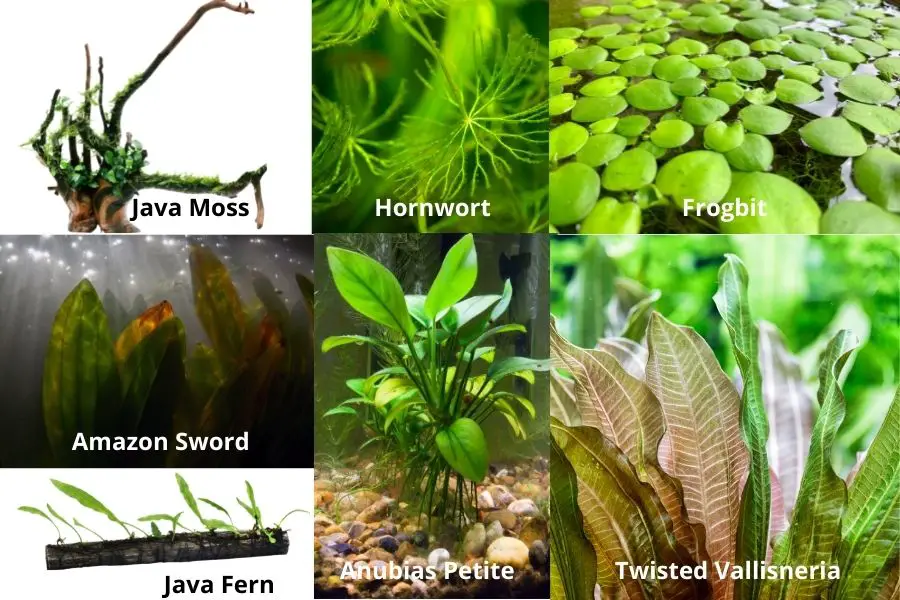
Do Red Eye Tetra Like Heavily Planted Aquariums?
Yes. They highly prefer to live in heavily planted aquariums. When you set the tank, you can add aquatic plants around and on the backsides of the tank. Further, you should keep sufficient open water in the front areas of the tank. Then red-eye tetras can swim and live happily in captivity. Furthermore, live plants help red eye tetras to feel the natural experience. Also, it facilitates some hiding places for fish. These hiding places will help to keep the privacy of fish. Moreover, floating plants also give a comfortable feel to fish. Consequently, live plants purify the water and balance the tank environment.
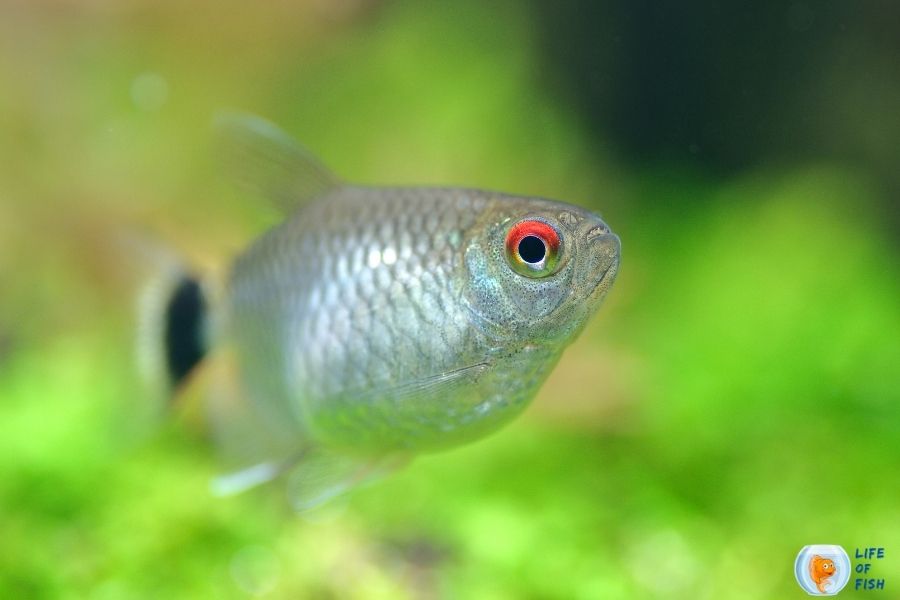
conclusion
The red eye tetra adds glamorous looks to a freshwater community aquarium. Further Its significant red-eye metallic look and dynamic energy create an elegant display when kept in a school of fish. Sometimes they will nibble the aquatic plants when they are hungry. But this behavior does not damage your aquascaped tank severely. Hence, you can keep this tiny beauty in your planted tank without any fear.
Read Next: Does Neon Tetra Need Light At Night? | 8 interesting Facts
